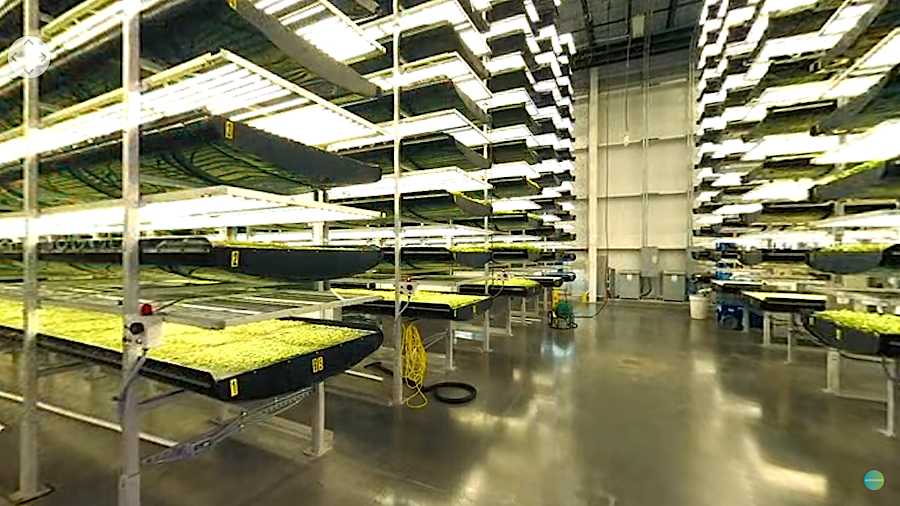
AeroFarms built 48 towers in Pittsylvania County, each 4.5-stories high, to grow microgreens indoors
Source: AeroFarms, AeroFarms 360 Farm Tour

AeroFarms built 48 towers in Pittsylvania County, each 4.5-stories high, to grow microgreens indoors
Source: AeroFarms, AeroFarms 360 Farm Tour
There is nothing new about vertical farms. That concept dates back to the Hanging Gardens of Babylon and farmers terracing hillsides in China and the Andes. Growing plants indoors on a commercial scale has been done ever since glass was used to create greenhouses.
From colonial days, Virginia farmers have used protective structures to grow tobacco seedlings and other plants in order to get a head start on the growing season. The advantage of indoor farming is the ability to control the indoor weather, especially temperature and water. The chief executive of one hydroponic greenhouse company said:1
The low cost of electricity, and the willingness of customers to pay higher costs for very fresh vegetables, may make it cost-effective to grow more crops indoors under artificial lights.
Modern aquaculture operations in Virginia are indoors now, and some greenhouses are being used for 12-month crops. It is cost-effective to raise tomatoes and other vegetables in indoor farms, especially in places near urban centers where restaurants prioritize use of locally-sourced materials.
Red Sun Farms opened a greenhouse in 2014 at New River Valley Commerce Park. It was designed to grow 10,000 tomato plants per acre in a medium of compressed coconut husks, with 75-85% of the irrigation provided by rainwater collected from the greenhouse roof.
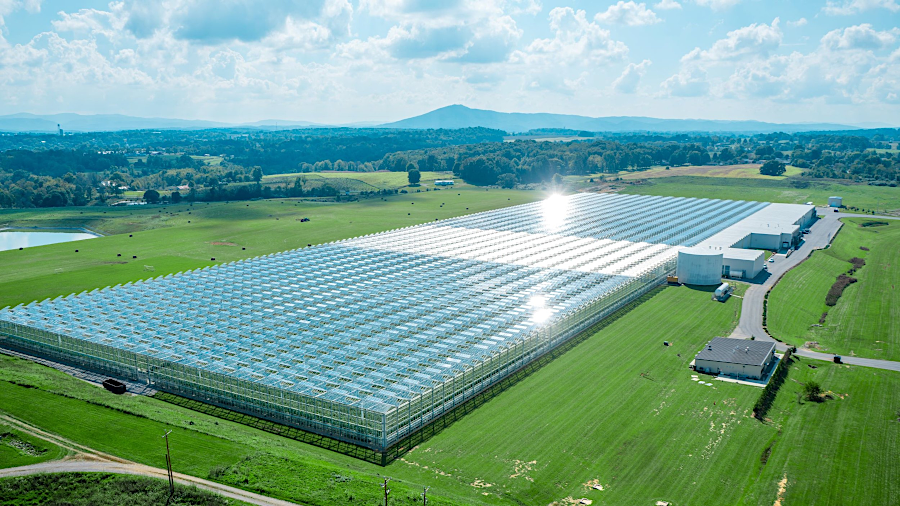
Red Sun Farms built greenhouses to grow tomatoes in 2014
Source: New River Valley Commerce Park, NRV Commerce Park Overview
Greenswell Growers built a $17 million greenhouse facility in Goochland County in 2017 to produce leafy microgreens, such as romaine and arugula. In the automated growing system, high-pressure sodium lamps supplemented natural sunlight. Temperature changes were limited to only 7 degrees between day and night, reducing stress on the growing plants that created a bitter taste. Indoor hydroponics allowed the company to harvest a crop in 21-28 days, compared to three-four harvests annually at outdoor farms.2
AeroFarms opened a vertical farming facility in 2022 at the Cane Creek Centre Industrial Park in Pittsylvania County near Danville. Its 48 towers, each over four stories in height, provided the equivalent growing space as 1,000 acres of land.
Climate control within each tower, including LED lighting and aeroponic mist, allowed fine-tuning of the conditions to maximize chemical-free growth of leafy vegetables such as arugula and kale. AeroFarms invested $55 million in the indoor farm. With such a large scale facility, the company planned to sell three million pounds of leafy greens annually to large retailers such as WalMart rather than to individual restaurants. One sales outlet was Whole Foods and Amazon Fresh grocery stores.
The Virginia Secretary of Agriculture called the building "the future of agriculture," and a company spokesperson said:3
By 2023, AeroFarms had vertical farm facilities in Ithaca, New York, in Newark, New Jersey, in in Abu Dhabi, United Arab Emirates, and in Pittsylvania County. It transferred commercial growing from its Newark facility to Danville, where the company had invested over $53 million. The New Jersey site was dedicated to research and development of indoor farming technology and new crops.
Despite the success of the indoor operation in Pittsylvania County, AeroFarms went through Chapter 11 bankruptcy. According to company and local officials, the bankruptcy would result in a faster expansion of the Virginia facility. AeroFarms had already exceeded its commitment to hire at least 92 workers in Pittsylvania County, enabling it to qualify for local tax abatments.4
In 2022, Plenty Unlimited announced plans to build "the largest, most advanced indoor vertical farm campus in the world" on 120 acres in Chesterfield County at Meadowville Technology Park. The $300 million facility would grow more than 4 million pounds of Driscoll strawberries annually.
Earlier in 2023, the General Assembly expanded the agricultural sales tax exemption to include growing food in controlled-environment agriculture (CEA) facilities. On July 31, 2023, Gov. Glenn Youngkin attended the groundbreaking ceremony for the structure for growing Driscoll strawberries.
The facility opened in September, 2024. Strawberries were planted in approximately 8,000 towers, each one 100 feet tall. WalMart had agreed to purchase the crop. At the opening, the Chief Executive Officer of Plenty Unlimited said:5
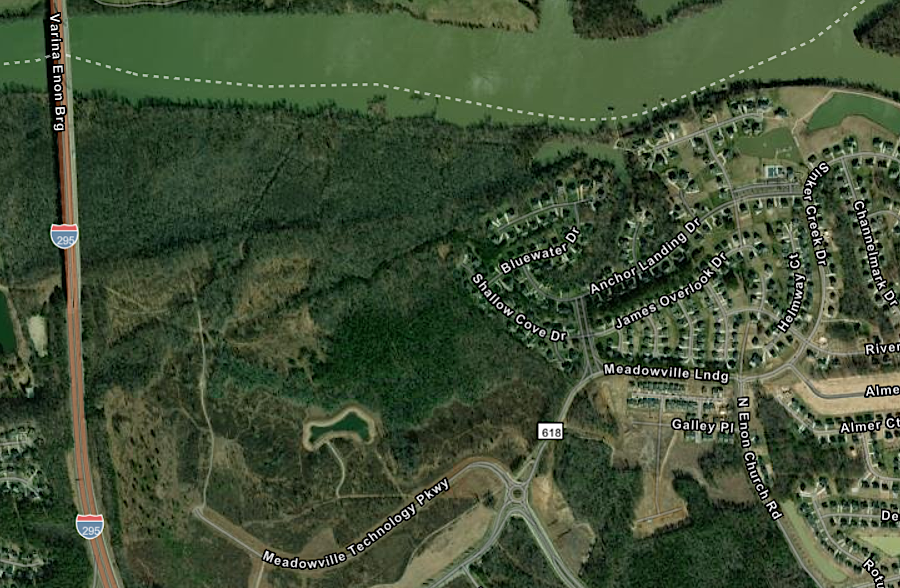
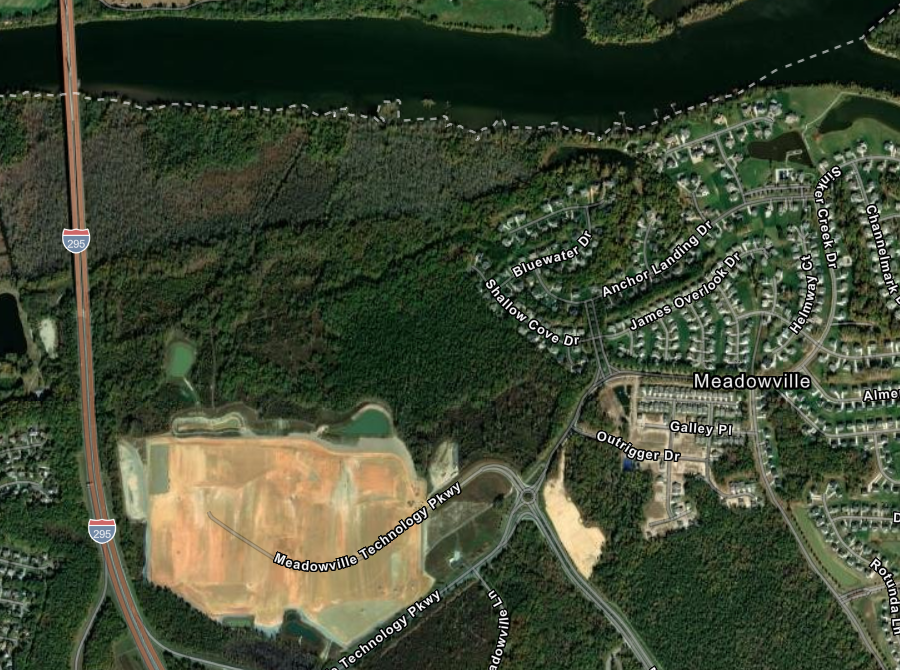
construction of Virginia's largest indoor farm began in 2023 at Meadowville Technology Park, to grow strawberries
Source: ESRI, ArcGIS Online
Plenty closed its Compton, California "flagship farm" in December 2024. Green leafy vegetables were produced there, but electricity costs were increasing. The company said it planned to focus narrowly on growing strawberries, and would retain its research and development facility in Laramie, Wyoming.
Financing was a challenge, and Plenty filed for Chapter 11 bankruptcy in March 2025. It had been unable to pay the contractors who built the first phase of the indoor strawberry growing facility in Virginia. Under Chapter 11, Plenty would stay in business while restructuring its debt. The bankruptcy court approved completion of the vertical farm in Chesterfield County, leaving it as Plenty's only operating facility.
Company officials remained optimistic that the strawberry business would be profitable:6
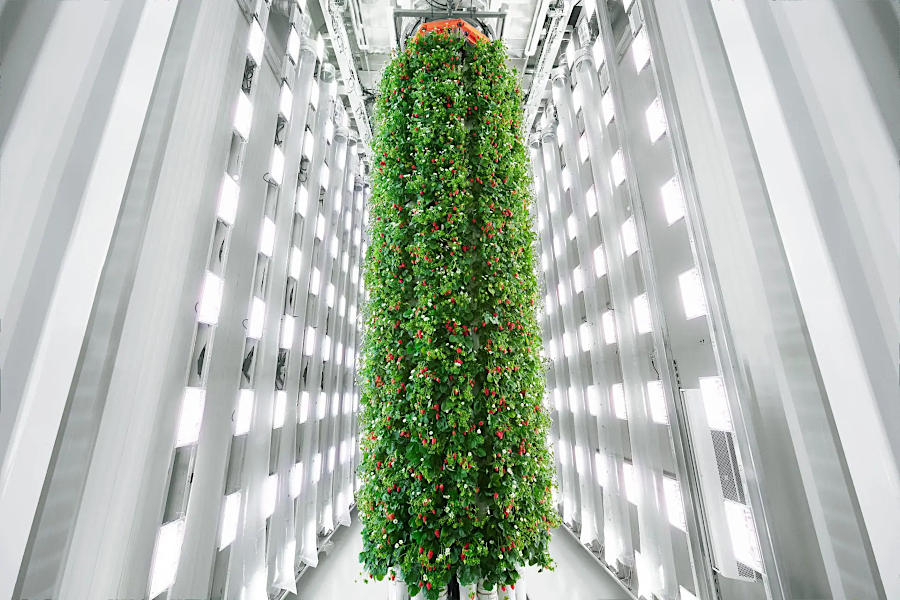
growing strawberries indoors on vertical towers with artificial light allows for controlled conditions and multiple harvests per year
Source: Plenty, Growing Differently
Efforts by economic development officials to make Virginia a leader in "controlled environment agriculture" were enhanced in 2023. A Netherlands-based company that developed industrial machinery for horticultural tasks decided to build its first American operation in Chesterfield County. The assembly and distribution facility was intended to service customers in North and South America.7
Babylon Micro-Farms started in Scott’s Addition in Richmond in 2017. It developed a business model of leasing vertical hydroponic systems and managing them remotely. By 2023, the company was managing 150 Galleri indoor farm systems in 23 states and four countries.8
The for-profit business model for vertical farms required finding enough customers willing to pay a premium price for fresh, locally-grown vegetables and having a low cost of production. Investors were willing to risk their capital in the expectation that the business model would be a success, viewing vertical farms as technology-driven businesses that would disrupt traditional agriculture. In particular, lettuce could be grown indoors even when droughts required taking out of production a high percentage of acres in California dedicated to that particular crop.
Beanstalk Farms opened in Springfield in 2018, growing pesticide-free leafy greens and herbs with an automated indoor growing production system. It moved to Herndon in 2022, repurposing a former data center. In that new location, the vertical hydroponics farm had the capacity to grow as many vegetables as on 50 acres of traditional farmland.
The owners had grown up in Northern Virginia. They considered multiple other locations before choosing to stay in the area because:9
Their vertical farm approach relied upon growing plants in soil-filled containers with carefully timed applications of water and nutrients. The developers who designed the indoor, LED-illuminated growing tower described it as:10

Beanstalk Farms team, in front of "the world's largest vending machine"
Source: Beanstalk Farms, Facebook post
Area2Farms in Arlington established its first indoor vertical farm in part of a warehouse on Four Mile Run that was previously used for paper storage. Their business model was to sell fresh greens and vegetables to Community Supported Agriculture (CSA) customers, delivering boxes up to 51 weeks a year to about 300 customers living within 10-15 miles. Expansion would be accommodated by establishing multiple growing facilities in Northern Virginia, rather than occupying more space in the warehouse.
The company developed a patented approach of placing boxes of different plants on eight levels of racks, creating towers extending 15' high. An automated process rotated the boxes each day between each level. The lowest level was 10-15°F cooler than the top, since heat rises. To mimic a dark night outdoors, there were no lights on the lowest (and coolest) two levels.
Shaved coconut husks inoculated with fungi and bacteria provided the growing medium, with nutrients from a liquid fertilizer based on molasses and sprayed on the plants when they reached the third level on the tower. The growing process was hydroponic, and boxes had holes which allowed capture and reuse of the water. Integrated pest management included the use of beneficial insects such as lacewings. Compartmentalizing the process with individual boxes meant any box with disease/infection could be identified and removed quickly.
The coconut husk medium was also reused. After harvest, plant trimmings and the coconut husks filled with plant roots were placed in a plastic bag along with three species of worms. Different species lived at different levels of the bags, and they digested the organic material until it was reused three weeks later. The worms were still in the growing medium when seeds were planted, and cycled naturally through the plant/grow/harvest/decompose cycle. Each cycle, the growing medium increased he amount of organic nutrients available for the rots.
Most of the greens at Area2Farms were harvested after three weeks, while some root crops such as carrots required extra growing time. Boxes were planted, grown, and harvested on a schedule so customers each week got a variety. That avoided the problem of some Community Supported Agriculture operations, where in some weeks the customer received just one or a few items that had ripened. When those items were challenging to consume before the next delivery, such as a grocery bag filled with dill, the advantages of buying CSA-produced food were limited.
Harvesting was followed by delivery to customers on Wednesday/Thursday every week, except for a one-week break over Christmas. Customers could sign up for a full season of deliveries, or as little as just one delivery. Prices in 2023 ranged from $40-50/week.
Area2Farms advertises the benefits of reducing the distance food has to travel ("food miles"):11
However, the electrical costs to grow plants indoors were high and traditional low-cost greenhouse operations competed against indoor farming operations. A series of the early vertical farming companies went out of business or lost most of their market value within several years after the COVID-19 pandemic.
One observer noted in 2023 that light-emitting diodes (LEDs) were energy-efficient, but the massive number of LED's in a vertical farm still required an excessive amount of total electricity:12
Better Future Farms calculated that its 61-acre greenhouse facility in Louisa County could compete successfully with indoor vertical farms, in part because sunlight was free. By using a greenhouse to control environmental conditions in a high-tech hydroponic production facility, the company expected to improve the yield in its lettuce farming by 10-20 times compared to traditional outdoor operations. Louisa County provided a $200,000 grant to attract Better Future Farms, and the state provided an additional $200,000.

Better Future Farms planned to grow lettuce in a high-tech hydroponic production facility
Source: Better Future Farms, Q&A with John McMahon, Better Future Farms Co-Founder and COO (CEA Insight)
Other than high-value marijuana, crops most suited to indoor growing include leafy greens such as arugula, tomatoes, and strawberries. They are sensitive to peaks of high temperatures, and the quality of those products is improved if shipped just short distances to reach customers quickly.
The tough-skinned, slow-ripening tomatoes bred for long-distance transport are relatively flavorless compared to home-grown tomatoes. In 2019, only 2% of the commercial varieties of tomatoes had the particular TomLoxC gene associated with fragrance and flavor.
Growing those specialty crops closer to the customer could be profitable and also reduce greenhouse gas emissions, but indoor farming was not suitable for growing the calorie-rich vegetables and fruits that feed the world. As one greenhouse operator noted:13
In 2025, Oasthouse Ventures announced plans to invest over $100 million to grow tomatoes in greenhouses to be built at Wildwood Commerce Park in Carroll County. The greenhouses would cover 65 acres, and be heated with biomass ("hardwood residuals" - bark, slabs, sawdust, etc.) from Virginia sawmills.14
From an environmental perspective, the reduction in transportation-related emissions is offset at least in part by the electricity used to power the LED lights indoors. Using renewable energy involves inefficiencies associated with generating and transmitting electricity.
Dr. Jonathan Foley, an advocate of improving the sustainability of traditional agriculture rather than replacing it, has labelled indoor agriculture as a counterproductive "fad." He assessed that the climate impact transport was not improved by growing closer to the customer even though the "food miles" are lower. Small local farms create smaller shipments, and can not take advantage of the more-efficient packaging and transportation options available to large operations.
He challenged the energy impacts of indoor farming, even if the electricity was generated by solar panels:15
Indoor farming does not eliminate land disturbance by agriculture, For facilities using artificial light powered by renewable solar panels still block forests from growing:16
Indoor farming offers one way to repurpose old school buildings in rural areas. Consolidation of schools as the population of K-12 students declined has left counties with abandoned structures. Some former school buildings are suitable for redevelopment of community centers, but those require government funding rather than generate new tax revenues.
In Pulaski, Vegg Inc. has sought to obtain historic tax credits in order to convert Jefferson Elementary School (1923-1994) into a modern grow house to produce lettuce. The project was a partnership with MOVA Technologies, which was demonstrating how to capture carbon from the atmosphere. The old brick structure had "thermal mass" that helped maintain a constant temperature, plus high ceilings that could accommodate tall racks. Richmond-based Pod Farms has developed a modular hydroponic system that can be used in the school's former auditorium.
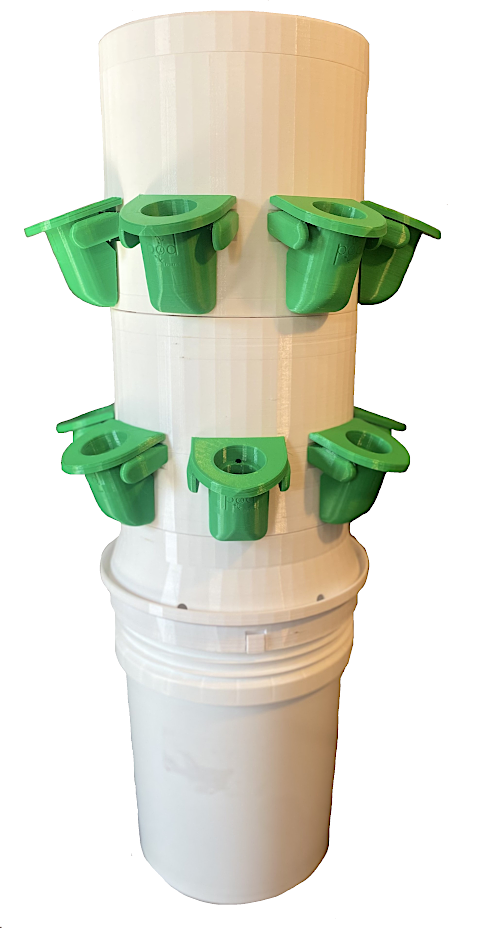
Pod Farms has developed a modular vertical hydroponic system
Source: Pod Farms, Who We Are
The project was designed to recycle carbon dioxide, enhancing plant growth. One of the Vegg investors, a graduate of Virginia Tech, said:17
Oasthouse Ventures announced plans in 2025 to invest over $100 million for an indoor growing facility in Carroll County. The company's first greenhouse at Wildwood Commerce Park was projected to cover 65 acres:18
Growing tomatoes indoors in Virginia provided not only a year-round supply, but also a tastier product that could be delivered to customers from New York to Chicago. Tomatoes grown and shipped from Florida fields were engineered to minimize damage during transport. The genes that created sugars were bred out of the tomato, reducing the threat from bacteria and fungi but also eliminating taste. A food critic described long-distance tomatoes as "an almost total gastronomic loss."
A Florida grower explained the challenge in producing tomatoes that could be shipped halfway across the continent:19
In Virginia, research to develop efficient technology and techniques for controlled environment agriculture operations is centered in Danville. The Controlled Environment Agriculture Innovation Center there is a partnership between the Institute for Advanced Learning and Research and Virginia Tech.
Source: Institute for Advanced Learning and Research, Controlled Environment Agriculture Innovation Center
Vurginia Tech classifies indoor growing with artificial lights, vertical farming, and greenhouses as "controlled environmental agriculture" (CEA):20
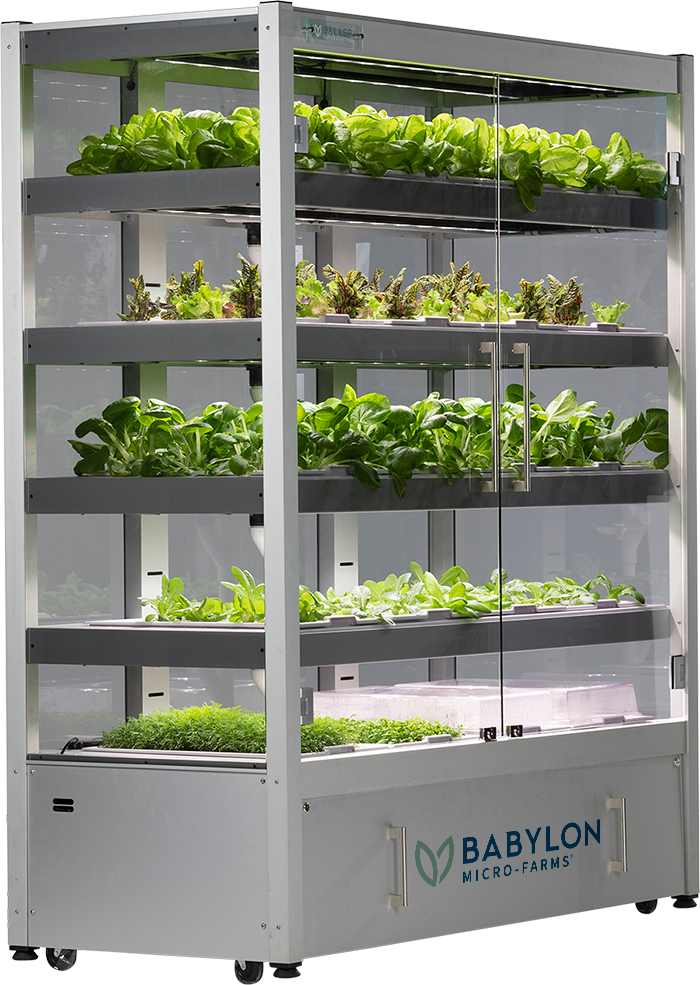
Babylon Micro-Farms, based in Richmond, manages vertical indoor farms remotely
Source: Babylon Micro-Farms
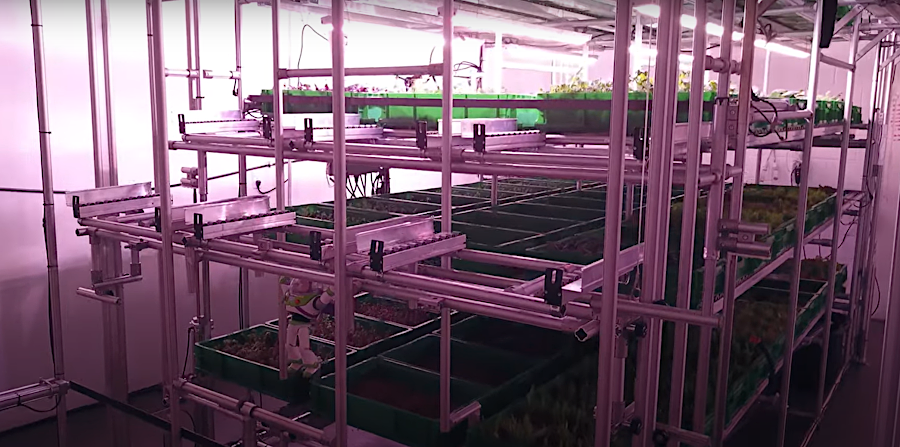
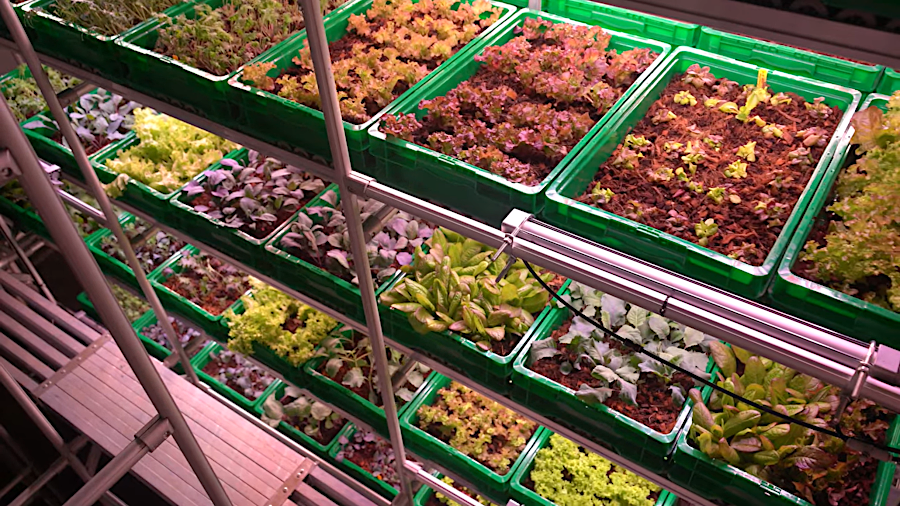
Area2 Farms uses automated technology to grow greens
Source: Area2Farms, Silo (It's best seen from above)